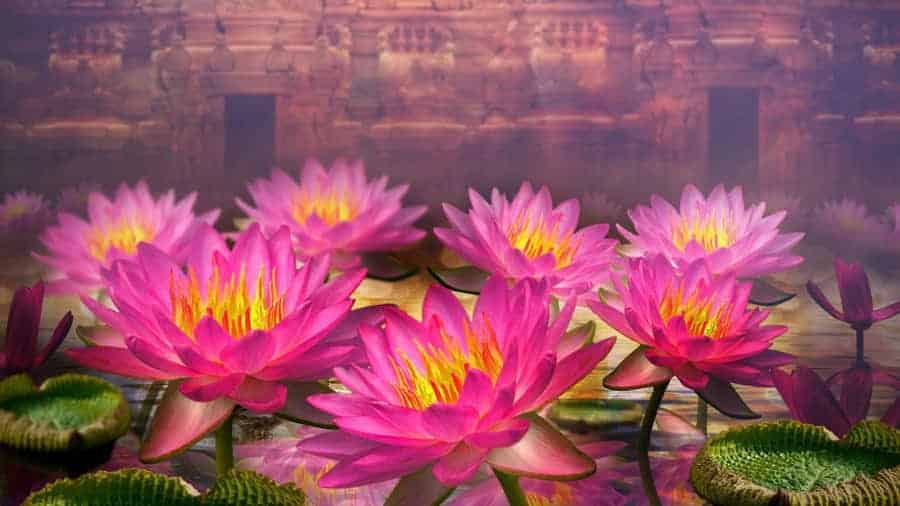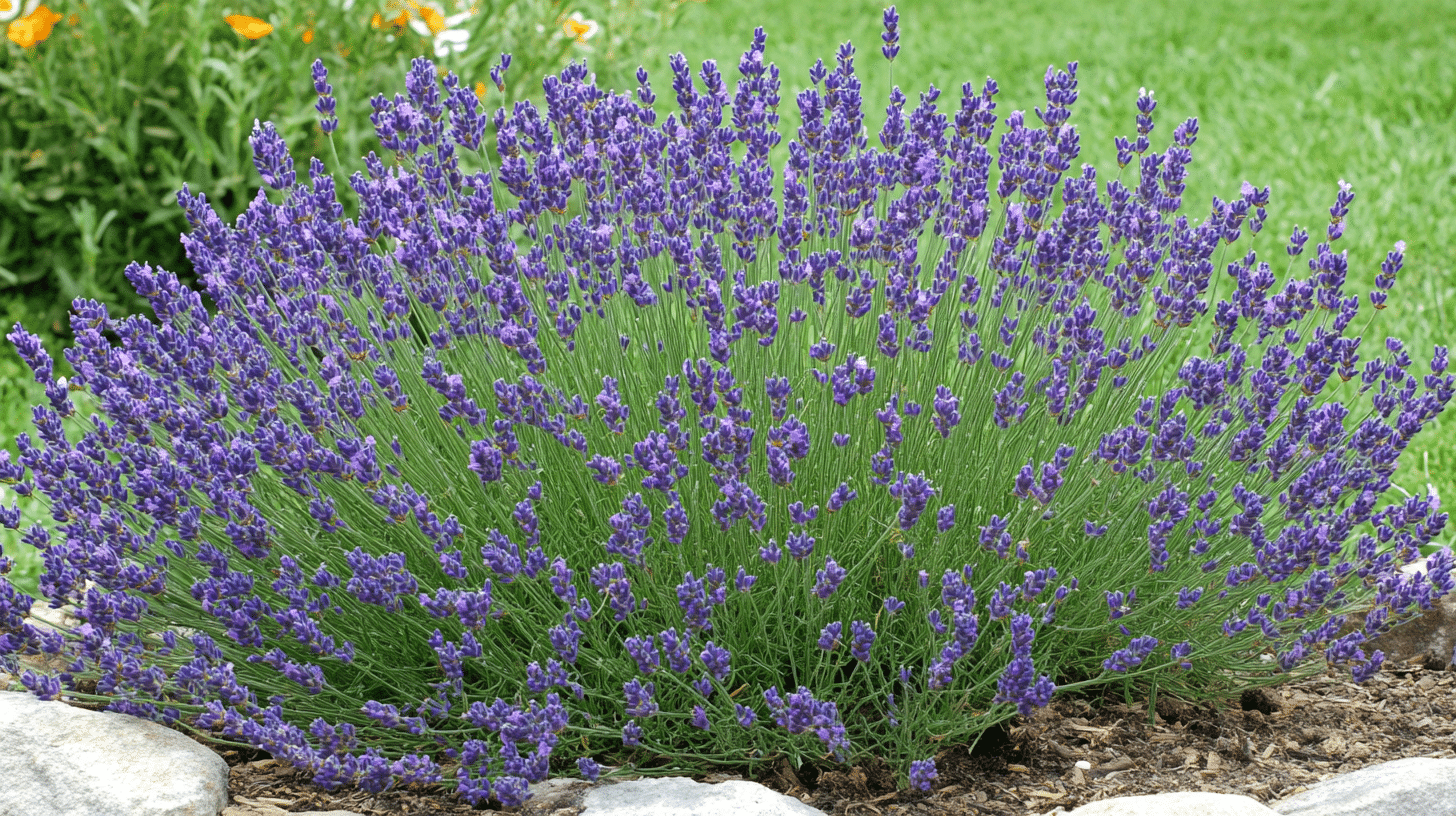The Mystical Significance of Lotus Flowers
The lotus flower emerges from gloomy waters, its petals untouched by the mud below. This stunning transformation has intrigued people for centuries, making the lotus flower a subject of wonder and reverence.
The lotus is special in our hearts and minds, from ancient civilizations to modern cultures. Its trip from muddy depths to radiant bloom mirrors our potential for growth and renewal.
Are you curious about the deeper significance of this extraordinary plant? The lotus flower’s meaning goes far beyond its outward beauty, touching on purity, rebirth, and spiritual awakening themes.
Join us as we explore the mystical world of lotus flowers, revealing the rich symbolism and cultural importance that have made this aquatic plant a timeless icon of hope and transformation.
Historical and Cultural Significance
The lotus flower holds deep meaning across various cultures and religions, particularly Buddhism, Hinduism, and Ancient Egypt.
1. Buddhism

In Buddhism, the lotus flower is closely tied to Buddha and spiritual enlightenment. The flower’s growth pattern, rising from murky waters to bloom clean and beautiful, symbolizes enlightenment.
This mirrors how individuals can rise above life’s challenges and attain spiritual purity. The lotus represents purity of body, mind, and spirit. Its ability to emerge unstained from muddy waters exemplifies detachment from worldly troubles and negativity.
The flower’s daily cycle of closing at night and reopening in the morning represents rebirth and spiritual awakening.
Different lotus colors hold specific meanings in Buddhism. The white lotus symbolizes purity and spiritual perfection. The pink lotus is particularly special, as it represents Buddha himself.
2. Hinduism

In Hinduism, the lotus flower is linked to several important deities. Lakshmi, the goddess of prosperity, is often depicted sitting on a lotus throne or holding lotus flowers.
Similarly, Vishnu is associated with the lotus, highlighting its divine nature.
In Hindu tradition, the lotus symbolizes beauty, fertility, prosperity, and eternal life. It represents the ideal of a person who performs their duties without attachment to reward, much like how the lotus remains unsullied despite growing in muddy waters.
The lotus represents the body’s energy centers or chakras in Hindu tantra. Each chakra is visualized as a lotus with a specific number of petals, from the four-petaled root chakra to the thousand-petaled crown chakra.
3. Ancient Egypt
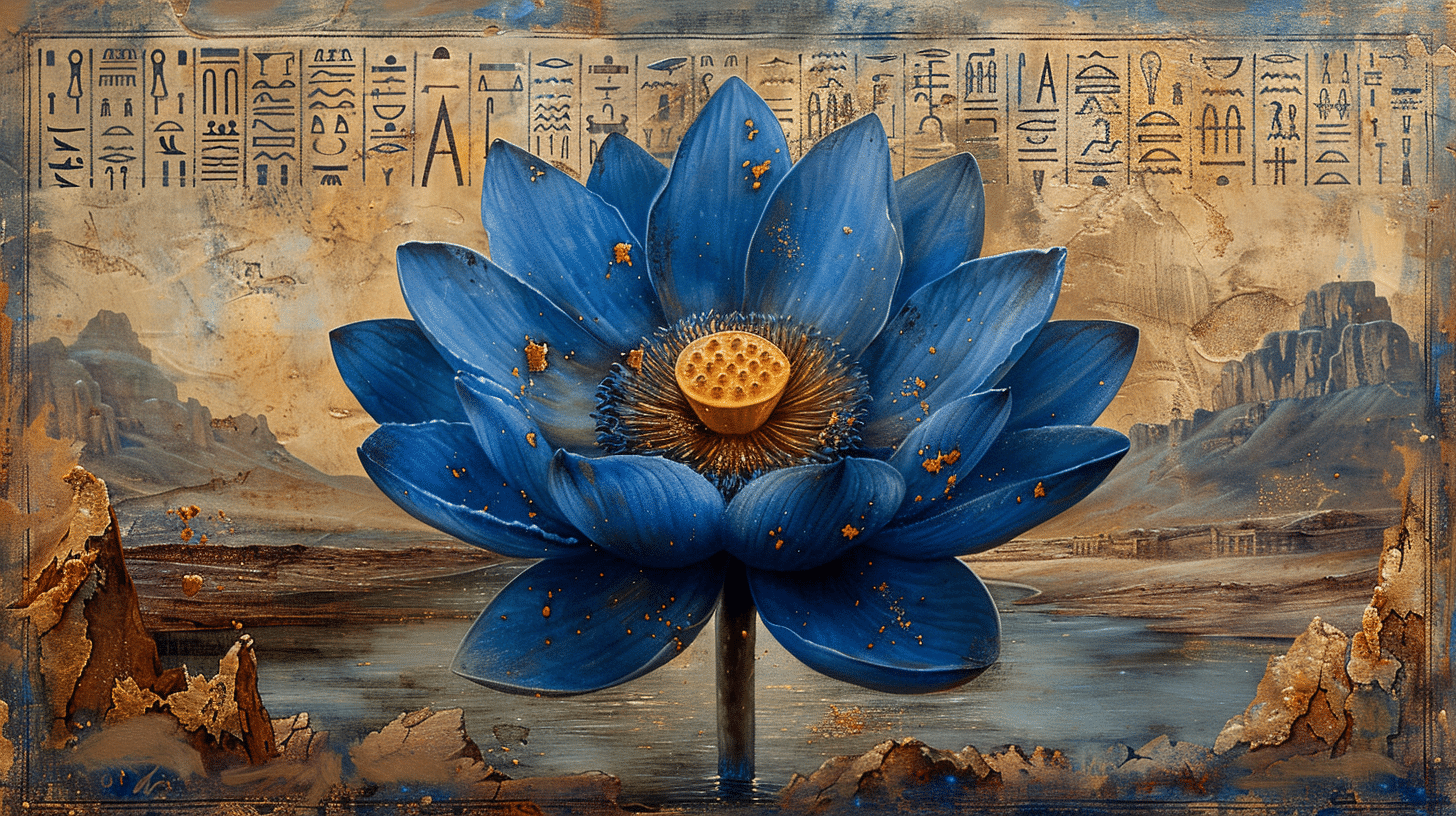
In Ancient Egyptian culture, the lotus flower symbolized rebirth and regeneration. This symbolism was closely tied to the sun’s daily cycle.
The Egyptians observed how lotus flowers closed at night and reopened in the morning, mirroring the sun’s movement.
The blue lotus was particularly revered in Ancient Egypt. It grew abundantly along the Nile River and symbolized fertility and abundance. Sadly, this variety is now endangered.
Lotus flowers are prominently featured in Ancient Egyptian art and hieroglyphs. They were often described alongside pharaohs and gods, highlighting their sacred status in Egyptian culture.
This rich cultural and historical significance across these major civilizations shows how the lotus flower’s meaning transcends time and geography, making it a universal symbol of spiritual growth and renewal.
Lotus vs Water Lilies
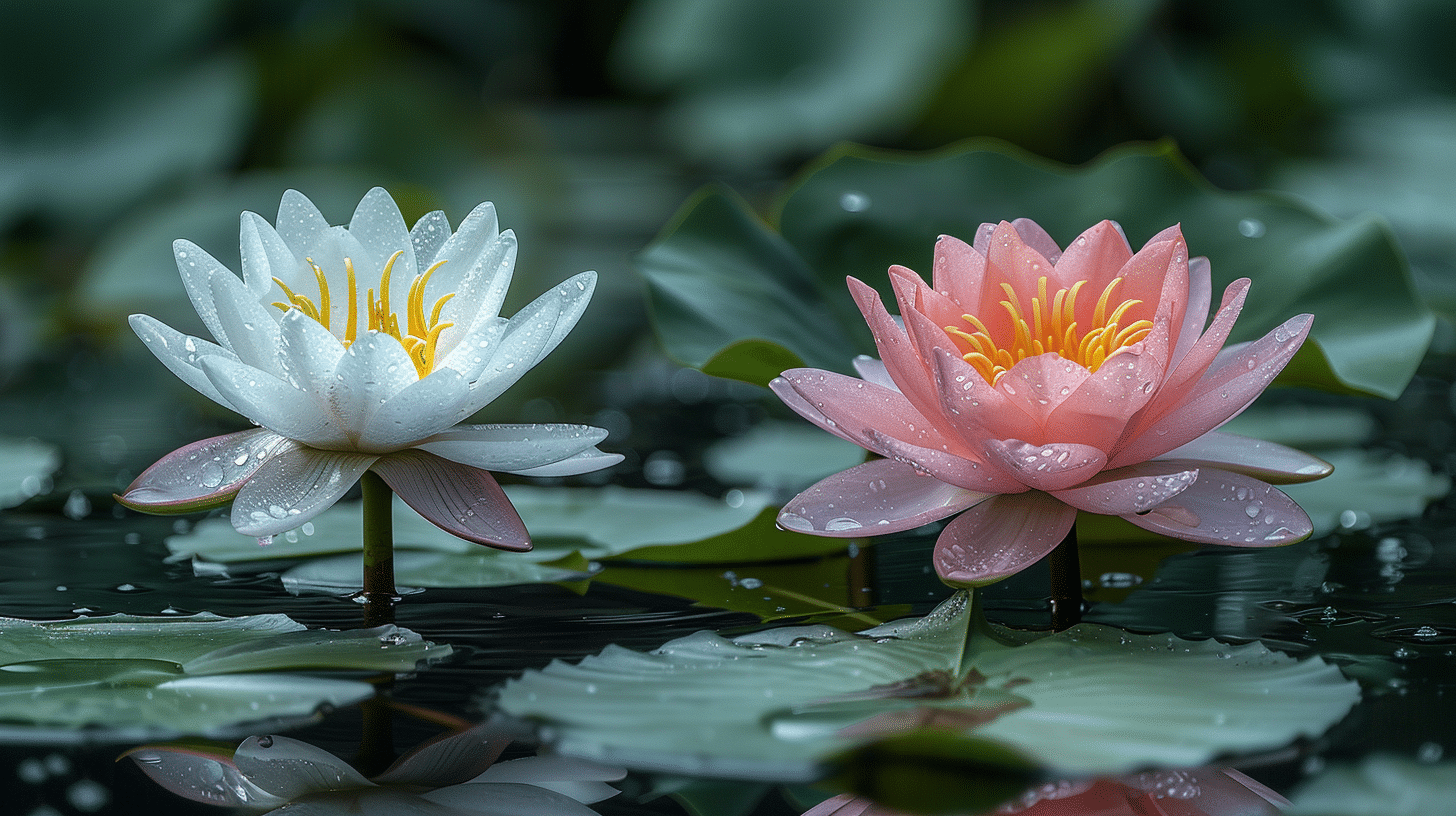
While lotus flowers and water lilies might look similar at first glance, they have distinct differences. Let’s explore what sets these aquatic plants apart.
1. Family and Growth Patterns
Lotus flowers belong to the Nelumbonaceae family, while water lilies are part of the Nymphaeaceae family. This difference goes beyond just classification – it affects how these plants grow and thrive.
Lotus plants root themselves in the mud at the bottom of ponds or slow-moving waters. Their strong stems push through the water, lifting leaves and flowers above the surface.
On the other hand, water lilies have leaves that float on the water’s surface, and their flowers may sit just above or on the water.
2. Appearance and Structure
Lotus flowers typically appear larger and more dramatic than water lilies. Their petals are broader and more open, creating a cup-like shape. Lotus leaves are also distinctive – round and water-repellent, often held high above the water’s surface.
Water lily flowers tend to be smaller and flatter, with pointed petals. Their leaves are more oval-shaped and rest on the water’s surface, creating the classic “lily pad” look.
3. Color Variations
Both plants offer a range of colors, but lotuses are more limited in their palette. Lotuses usually come in white, pink, yellow, and red hues. Each color carries its meaning, especially in Buddhist and Hindu traditions.
Water lilies, however, boast a wider color range. They can be found in shades of white, yellow, pink, red, and even blue or purple. This variety makes them popular choices for ornamental ponds.
While both plants add beauty to aquatic settings, the lotus’s unique growth pattern and symbolic meanings set it apart. Its ability to rise above the water’s surface mirrors its deeper significance in many cultures.
Botanical and Historical Insights
The lotus flower’s story stretches far back in time, revealing a plant with remarkable resilience and adaptability. Let’s explore some charming botanical and historical insights about this iconic flower.
Ancient Origins

Lotus flowers are not just old – they’re ancient. Fossil records show that lotus plants have existed for over 100 million years.
This means these flowers were blooming when dinosaurs roamed the Earth. Their ability to survive through major climate changes and mass extinctions speaks to their incredible adaptability.
Living Species

Today, there are only two living species of lotus.
1. Nelumbo nucifera: Known as the Sacred Lotus, this species is native to much of Asia and parts of Australia. It’s the more well-known variety, deeply rooted in Buddhist and Hindu traditions.
2. Nelumbo lutea: Often called the Yellow Lotus or American Lotus, this species is native to North and Central America. While less famous than its Asian cousin, it’s equally beautiful and significant in some Native American cultures.
Seed Resilience and Longevity
One of the most remarkable features of lotus plants is the extraordinary resilience of their seeds. Lotus seeds can remain viable for an incredibly long time – sometimes hundreds or thousands of years.
Scientists have successfully germinated lotus seeds that were over a thousand years old!
This seed longevity allowed lotus plants to survive harsh conditions, including the last Ice Age. If conditions aren’t right for growth, the seeds wait, remaining dormant until the environment becomes favorable.
This ability to endure through time has earned the lotus a reputation for rebirth and renewal in many cultures.
The lotus’s long history and remarkable adaptations make it more than a pretty flower. It’s a living link to our planet’s past and a symbol of nature’s enduring strength.
The Lotus Effect
The lotus flower is exquisite for its beauty and symbolism, but it inspires scientists and engineers with its unique physical properties. Let’s explore the mesmerizing “lotus effect” and its real-world applications.
1. Superhydrophobic Properties
Lotus leaves have an amazing ability to repel water. This property is called superhydrophobicity. When water droplets land on a lotus leaf, they form nearly perfect spheres and roll off, taking any dirt or debris with them.
This self-cleaning mechanism keeps the lotus pristine even in muddy waters.
2. How It Works
The lotus leaf’s water-repelling magic comes from its microscopic structure. The leaf surface is covered with tiny bumps coated in even tinier waxy crystals, creating a rough texture that water can’t grip.
Instead of spreading out, water droplets maintain their shape and easily roll off the leaf.
3. Scientific Applications
Scientists are studying the lotus effect to create new water-repellent and self-cleaning materials. Some potential applications include:
- Fabric treatment: Creating clothes that stay clean and dry more easily.
- Building materials: Developing paints and coatings that keep buildings cleaner and more resistant to water damage.
- Solar panels: Designing self-cleaning solar panels that maintain peak efficiency.
- Medical devices: Creating surfaces that resist bacterial growth and are easier to keep sterile.
The lotus effect shows how nature’s solutions can inspire human innovation. By mimicking the lotus leaf’s structure, we’re finding new ways to make materials that stay clean and dry with less effort.
This natural phenomenon reinforces the lotus flower’s status as a symbol of purity. Even at a microscopic level, the lotus has found a way to rise above its surroundings and stay clean – a powerful metaphor for personal growth and resilience.
Lotus in Medicine and Cuisine
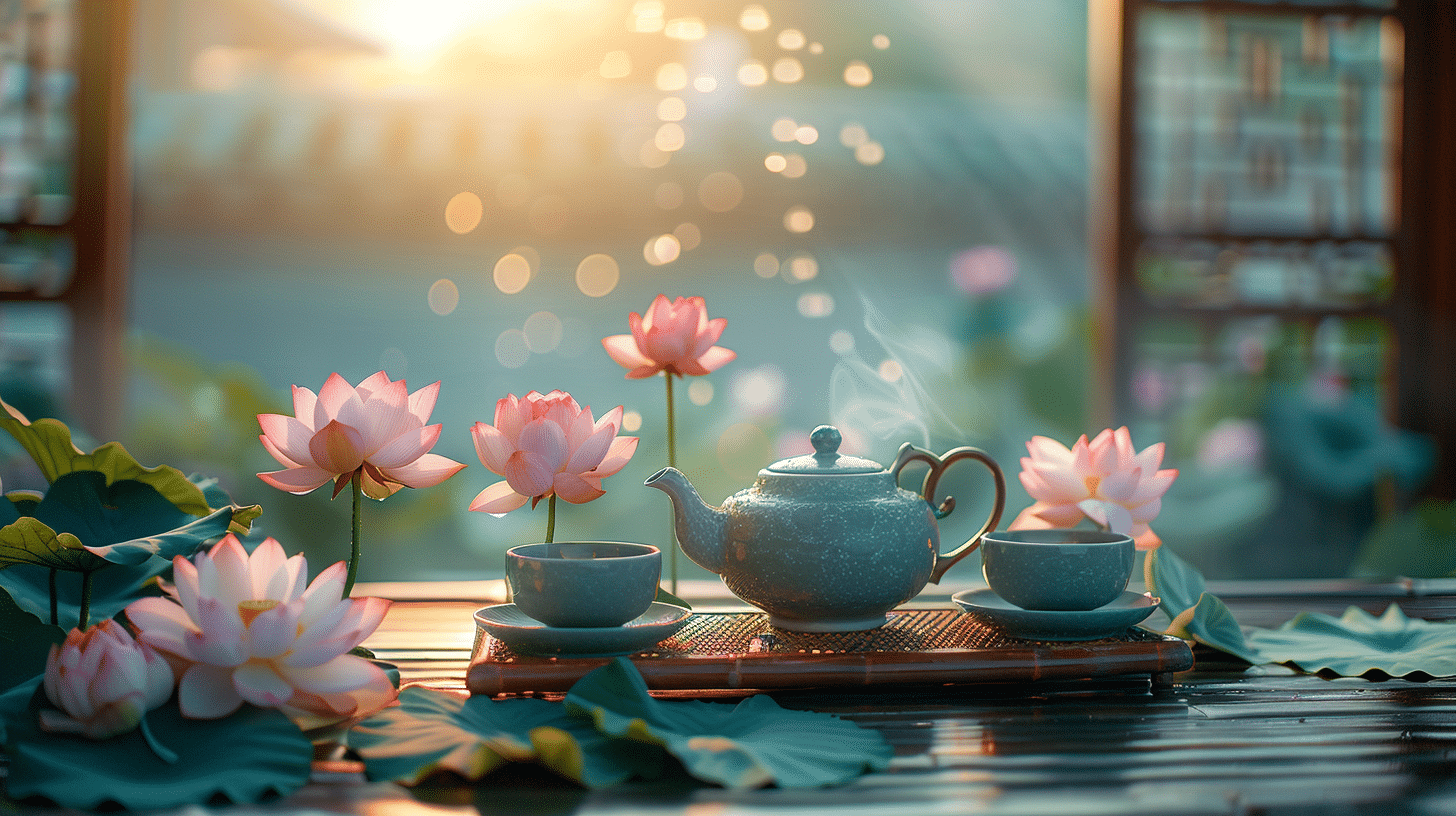
The lotus plant isn’t just a feast for the eyes; it’s also a source of nourishment and healing. Let’s explore how different parts of this versatile plant are used in food and medicine.
1. Edibility
One of the most interesting facts about lotus plants is that every part is edible. From root to flower, humans have found ways to incorporate lotus into their diets and health practices.
2. Culinary Uses
- Lotus Root: This crunchy, tubular root is popular in many Asian cuisines. It can be eaten raw, cooked, or pickled. Its unique texture and mild flavor make it a versatile addition to soups, stir-fries, and salads.
- Lotus Tea: Lotus tea is a common beverage in China, Korea, and Vietnam. It’s made by steeping either the flowers or leaves of the lotus plant. The tea has a delicate, floral flavor and is often enjoyed for its calming properties.
- Lotus Seeds: These small, nutty seeds are used in savory and sweet dishes. They can be eaten raw, roasted, or ground into a paste for use in desserts.
- Lotus Stems: Lotus stems taste like celery and add a crisp texture to many dishes.
3. Health Benefits and Traditional Medicine
In traditional Chinese medicine, various parts of the lotus plant are used for their health benefits:
1. Lotus seeds are believed to have a calming effect and are used to treat anxiety and insomnia.
2. Lotus root is said to aid digestion and help regulate blood sugar levels.
3. The leaves and flowers are used to treat fever and inflammation.
4. The Lotus stem is believed to have cooling properties and balances the body’s energy.
Modern research is beginning to support some of these traditional uses, finding that lotus plants contain compounds with antioxidant and anti-inflammatory properties.
The versatility of the lotus in cuisine and medicine reflects its cultural significance. Just as the plant rises from the mud to produce beauty, it also provides sustenance and healing, making it truly special in symbolism and practical use.
Symbolism Across Religions
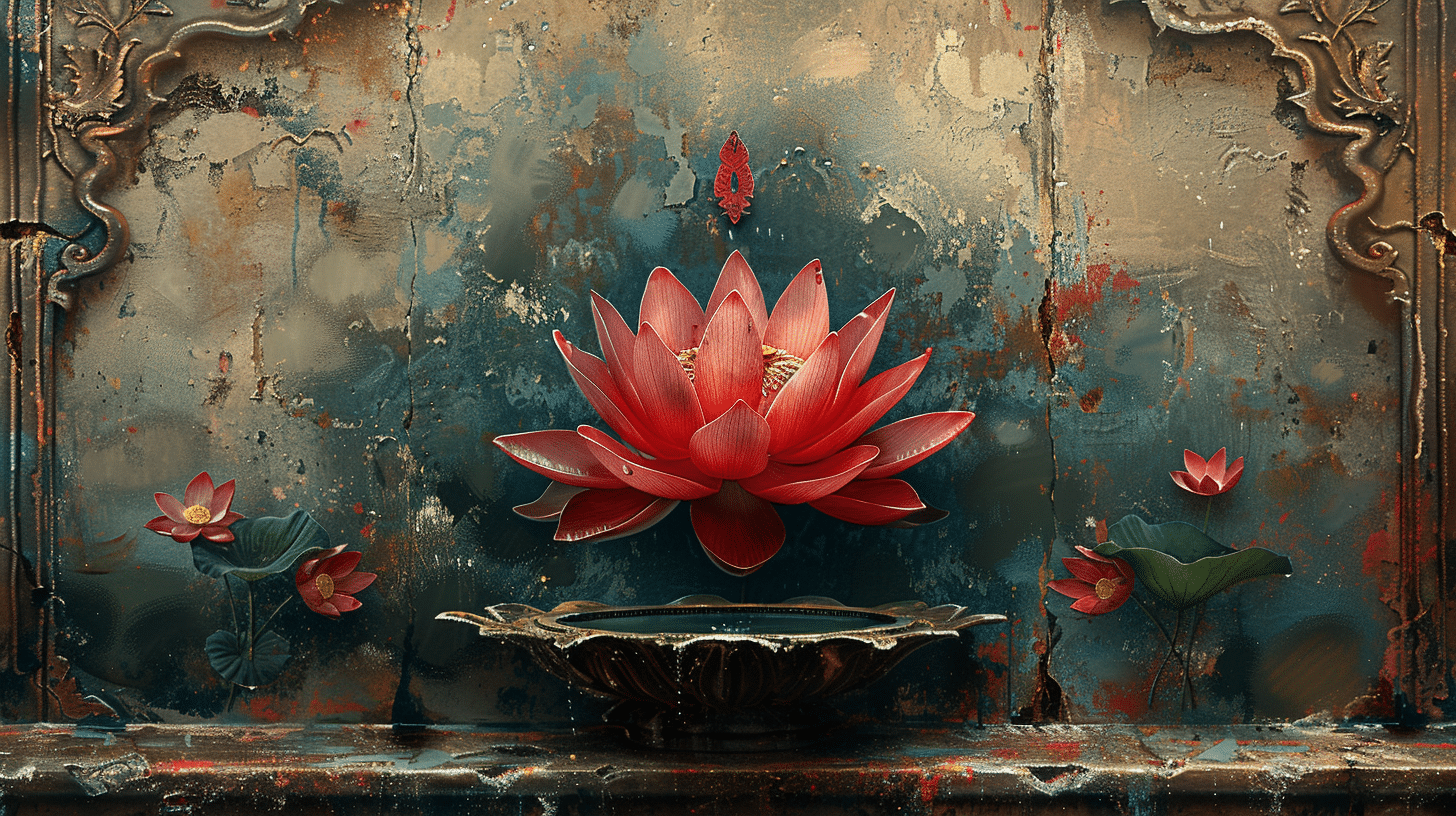
The lotus flower’s meaning extends far beyond its physical beauty. Across various religions and spiritual practices, the lotus is a powerful symbol, representing purity, the ability to overcome adversity, and rebirth. Let’s explore these themes in more depth.
Purity
The lotus’s ability to emerge pristine from murky waters has made it a universal symbol of purity. This unique trait resonates deeply in many spiritual traditions.
- In Buddhism, the lotus represents body, mind, and speech purity
- Hinduism views the lotus as a symbol of divine beauty and spiritual purity.
- Despite its muddy origins, the flower’s unblemished petals symbolize maintaining pure nature in a challenging world.
Overcoming Adversity
The lotus’s growth in difficult environments symbolizes resilience and the triumph of spirit over material circumstances.
- The plant’s ability to thrive in muddy, swampy conditions represents the human capacity to rise above life’s challenges.
- The lotus is a powerful symbol of emotional healing and personal growth in yoga and reiki practices.
- This symbolism encourages individuals to stay true to their values and maintain inner peace, even in troubling times.
Rebirth
The lotus’s life cycle and unique properties make it a potent symbol of rebirth and renewal.
- Its daily blooming cycle, which opens with the morning sun and closes at night, represents continuous renewal and the potential for new beginnings.
- The remarkable longevity of lotus seeds, which can remain viable for centuries, symbolizes the enduring nature of the soul and the potential for spiritual awakening.
- In many traditions, the lotus represents the birth, death, and rebirth cycle, encouraging followers to embrace change and growth.
These symbolic meanings of the lotus flower transcend cultural and religious boundaries, offering universal lessons about human potential and spiritual growth.
The lotus reminds us that, like the flower, we can rise above our circumstances, maintain our inner purity, and continually renew ourselves.
Color Symbolism
The lotus flower’s meaning extends beyond its general symbolism. Different colors of lotus flowers carry unique significance across various cultures and spiritual traditions. Let’s explore the symbolism of the four main lotus colors.
White Lotus

The white lotus represents purity and perseverance. Its pristine petals symbolize
– Mental and spiritual purity
– The pilgrimage towards enlightenment
– Relentless faith and determination
In Buddhism, the white lotus is often associated with bodhi or awakening. It represents a state of mental purity and spiritual perfection. In Hinduism, white lotuses are linked to the divine, usually depicted with deities.
Pink Lotus
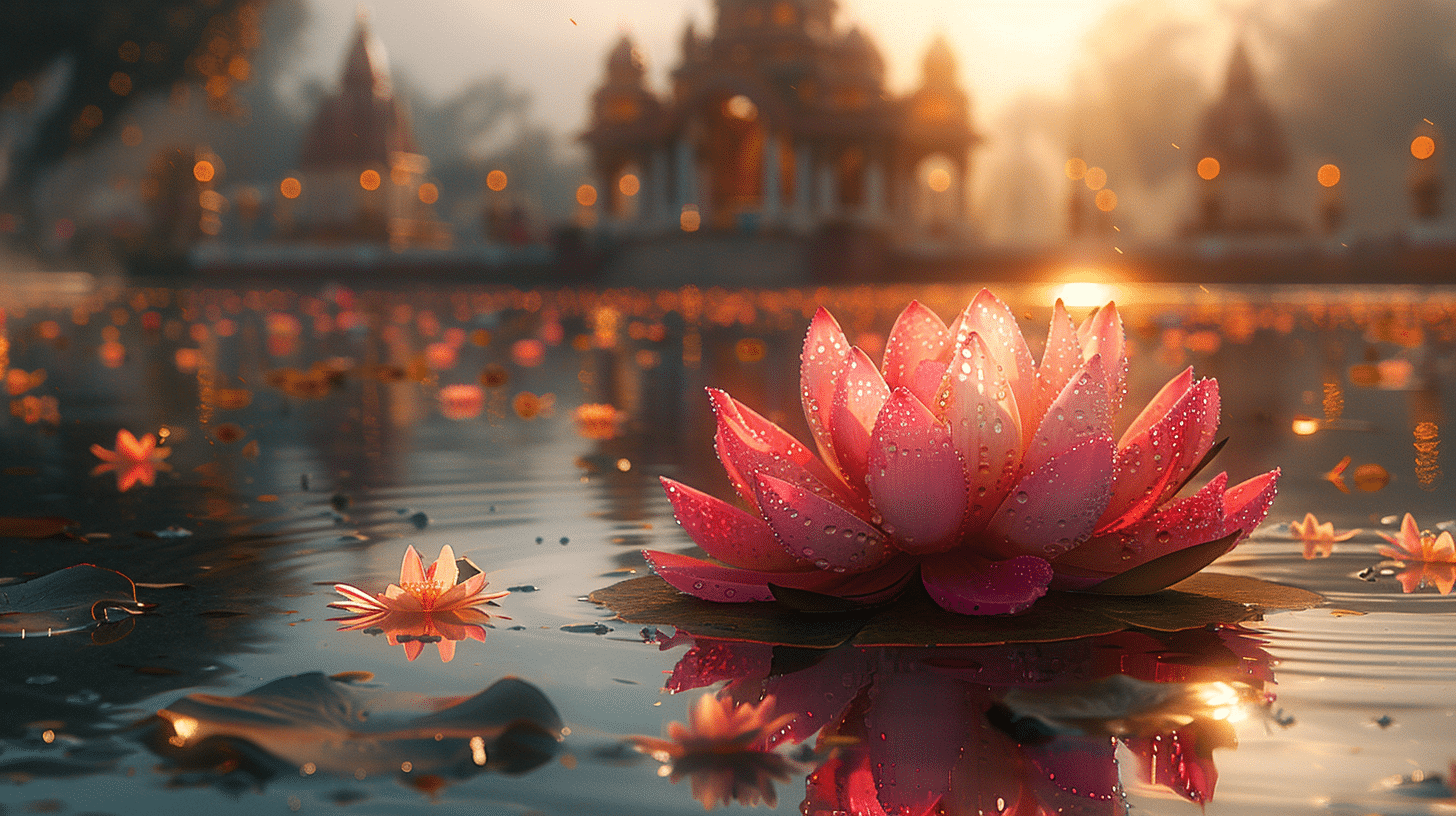
Pink lotuses symbolize rebirth and beauty. They represent
- The Buddha’s earthly nature
- The history of Buddhism
- Divine beauty and feminine grace
In Hindu imagery, pink lotus flowers often symbolize delicate, feminine energy. They’re commonly used in depictions of various goddesses, representing their divine beauty and grace.
Red Lotus
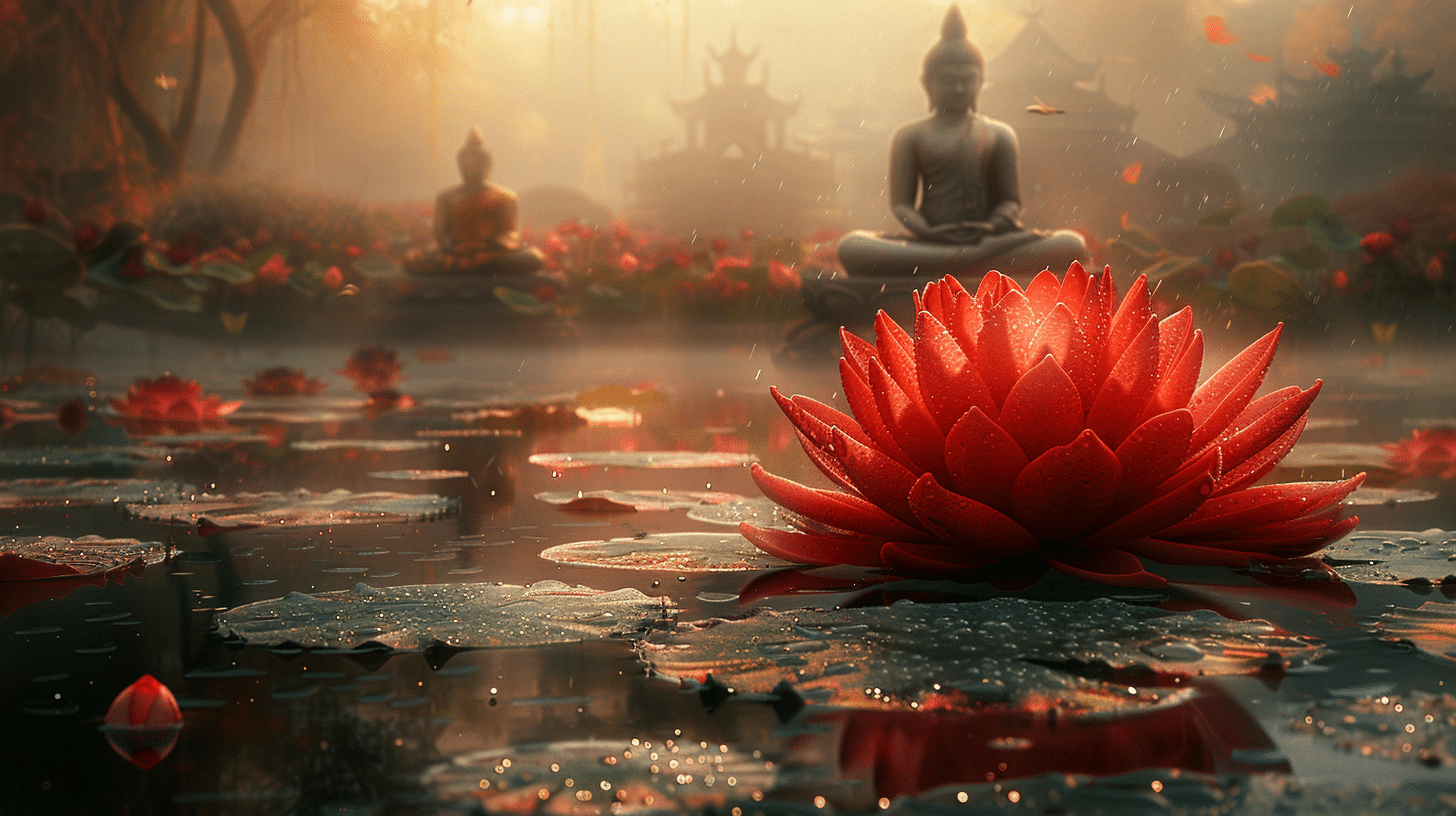
The red lotus embodies passion and bold expression. It signifies
- Love and compassion
- The heart and its emotions
- Boldness and strength in adversity
In Buddhism, the red lotus is associated with Avalokiteshvara, the bodhisattva of compassion. It represents the original nature of the heart and the purity of love that transcends desire.
Blue Lotus

The blue lotus, one of the rarer varieties, symbolizes
- Wisdom and knowledge
- Victory of spirit over senses
- The pilgrimage towards enlightenment
In Buddhism, the blue lotus reminds practitioners to focus on their innate, Buddha-like characteristics. It symbolizes the victory of wisdom over earthly desires and attachments.
Understanding these color meanings adds depth to our appreciation of lotus flowers. Whether in art, meditation, or daily life, the specific color of a lotus can convey powerful messages about purity, rebirth, passion, and wisdom.
Lotus in Modern Culture
The lotus flower’s rich symbolism hasn’t faded with time. It has found new life in modern culture, particularly in personal adornment and interior design.
Let’s explore how the lotus continues to inspire and delight in contemporary settings.
Tattoos and Jewelry
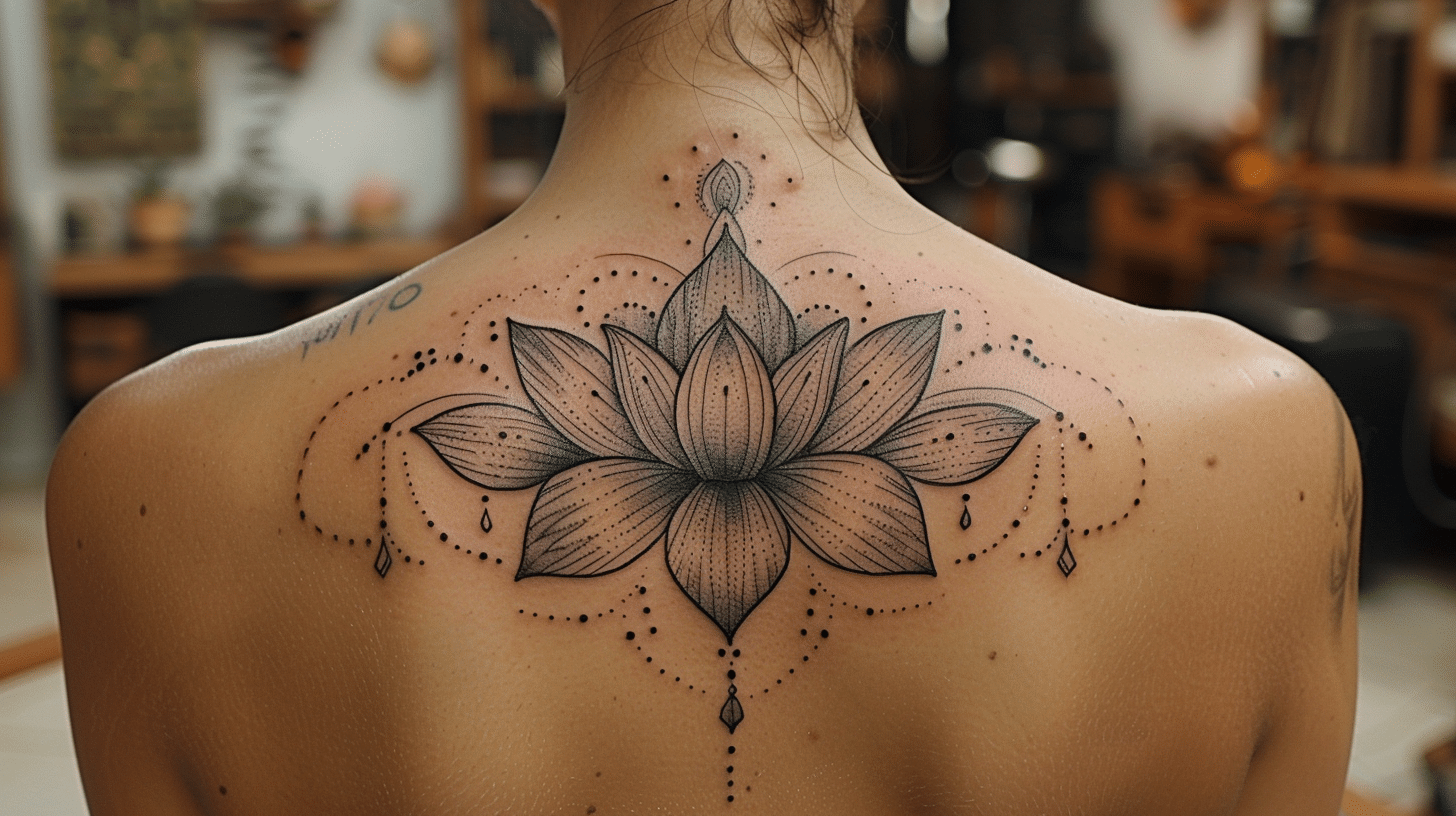
The lotus has become a popular choice for tattoos and jewelry, allowing people to carry its symbolic meaning with them:
- Tattoos: Many choose lotus tattoos to represent personal growth, overcoming hardship, or spiritual awakening. The flower’s trip from mud to bloom is a metaphor for life’s challenges and triumphs.
- Jewelry: Lotus-inspired necklaces, earrings, and rings are sought after for their beauty and symbolism. These pieces often serve as personal reminders of inner strength and purity.
People often choose lotus designs to reflect their tripss or aspirations, making each piece uniquely meaningful.
Home Decor and Design

The lotus’s graceful form has also made its way into home decor and interior design.
- Wallpaper: Lotus patterns feature in many wallpaper designs, adding a touch of nature and symbolism to living spaces. These patterns range from subtle and minimalist to bold and dramatic.
- Furniture: Lotus-shaped chairs or tables can serve as striking focal points in a room, blending form and symbolism.
- Lighting: Lotus-inspired lamps and light fixtures can create a serene atmosphere, mimicking the flower’s gentle glow.
Art Nouveau Influence

The lotus was particularly favored in the Art Nouveau movement of the late 19th and early 20th centuries.
- The movement’s focus on natural forms made the lotus fit perfectly. Its graceful curves and symmetry aligned well with Art Nouveau’s stylish principles.
- Lotus motifs appeared in everything from architecture to everyday objects, influencing designs of lampposts, furniture, and decorative items.
- This period helped cement the lotus’s place in Western design, expanding its cultural significance beyond its Eastern origins.
Today, the lotus continues to inspire designers and artists. Its timeless beauty and rich symbolism make it a versatile and meaningful element in modern culture.
Whether worn close to the heart as jewelry, displayed proudly as a tattoo, or used to enhance living spaces, the lotus flower’s meaning continues to resonate in our contemporary world.
Final Words
As we close our expedition through the world of lotus flowers, we’re reminded of their timeless appeal and deep significance. The lotus flower’s meaning stretches across cultures and centuries, touching on purity, resilience, and rebirth themes.
From its roots in muddy waters to its pristine blooms, the lotus shows us the power of rising above our circumstances.
Whether you’re drawn to its symbolic meaning, its beauty in art and design, or its practical uses in cuisine and medicine, the lotus offers something for everyone.
As you reflect on the lotus flower’s meaning, consider how you can emerge from life’s challenges with grace and beauty.
Like the lotus, we all have the potential to bloom, no matter where we’re planted.

